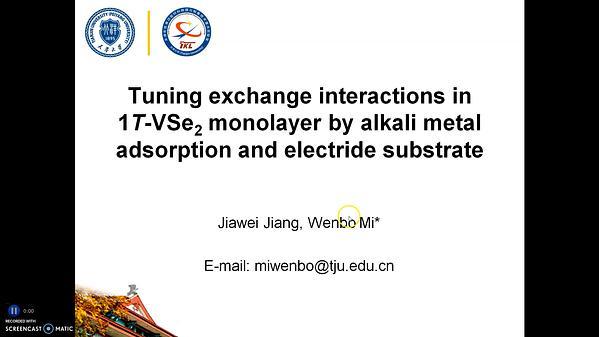Would you like to see your presentation here, made available to a global audience of researchers?
Add your own presentation or have us affordably record your next conference.
Recently, two-dimensional (2D) materials have emerged as a replacement for heavy metals (HM) because of their large spin-charge interconversion efficiency 1. In this work, we explore a promising and relatively less explored 2D monochalcogenide SnS for spintronics application. Through symmetry arguments, it is proposed that SnS should exhibit unconventional spin-orbit torques (SOTs), which is very important for energy-efficient switching of magnets with perpendicular magnetic anisotropy (PMA) 1. SnS thin films up to monolayer (ML) thickness have been grown on Si/SiO2 substrates using pulsed laser deposition (PLD) technique at 200 °C and room temperature (RT). Two typical Raman active modes (Ag and B3g) 2 can be distinguished in the acquired Raman spectra Fig. 1. We performed spin-torque ferromagnetic resonance (STFMR) measurements to investigate the SOTs in SnS/Ni80Fe20 system. For ST-FMR measurements, we fabricated SnS/Ni80Fe20 rectangular microstrips using the lift-off technique. For STFMR measurements, an in-plane RF current of frequency varying from 4 GHz to 8 GHz was applied to the bilayer in the presence of an external magnetic field (H). We measured the voltage (Vmix) across the device, which originated due to the mixing of AMR and RF current. We determine the in-plane and out-of-plane torque components by fitting the Vmix with a sum of symmetric and antisymmetric Lorentzian. We performed a complete angular dependence of the STFMR signal by varying the magnetization angle φ in the sample plane. In addition to a conventional sin2φcosφ (Vy,s) dependence, we found sin2φ (Vz,s) dependence Fig. 2, which is a signature of unconventional out-of-plane anti-damping like torque 3. Thus our results suggest that SnS can be used to achieve efficient switching of magnetic devices with PMA via the strong unconventional out-of-plane anti-damping like torque.
References 1 Y. Liu et. al., ACS Nano 14, 9389 (2020).
2 A.N. Mehta et. al., J. Microsc. 268, 276 (2017).
3 D. MacNeill, et al., Nat. Phys. 13, 300 (2017).

